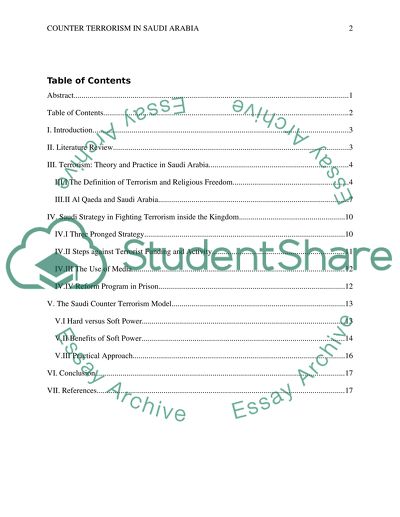Cite this document
(“The Efficiency of the Counter Terrorism Program in Saudi Arabia Thesis”, n.d.)
Retrieved from https://studentshare.org/history/1400012-the-efficiency-of-the-counter-terrorism-program-in
Retrieved from https://studentshare.org/history/1400012-the-efficiency-of-the-counter-terrorism-program-in
(The Efficiency of the Counter Terrorism Program in Saudi Arabia Thesis)
https://studentshare.org/history/1400012-the-efficiency-of-the-counter-terrorism-program-in.
https://studentshare.org/history/1400012-the-efficiency-of-the-counter-terrorism-program-in.
“The Efficiency of the Counter Terrorism Program in Saudi Arabia Thesis”, n.d. https://studentshare.org/history/1400012-the-efficiency-of-the-counter-terrorism-program-in.


